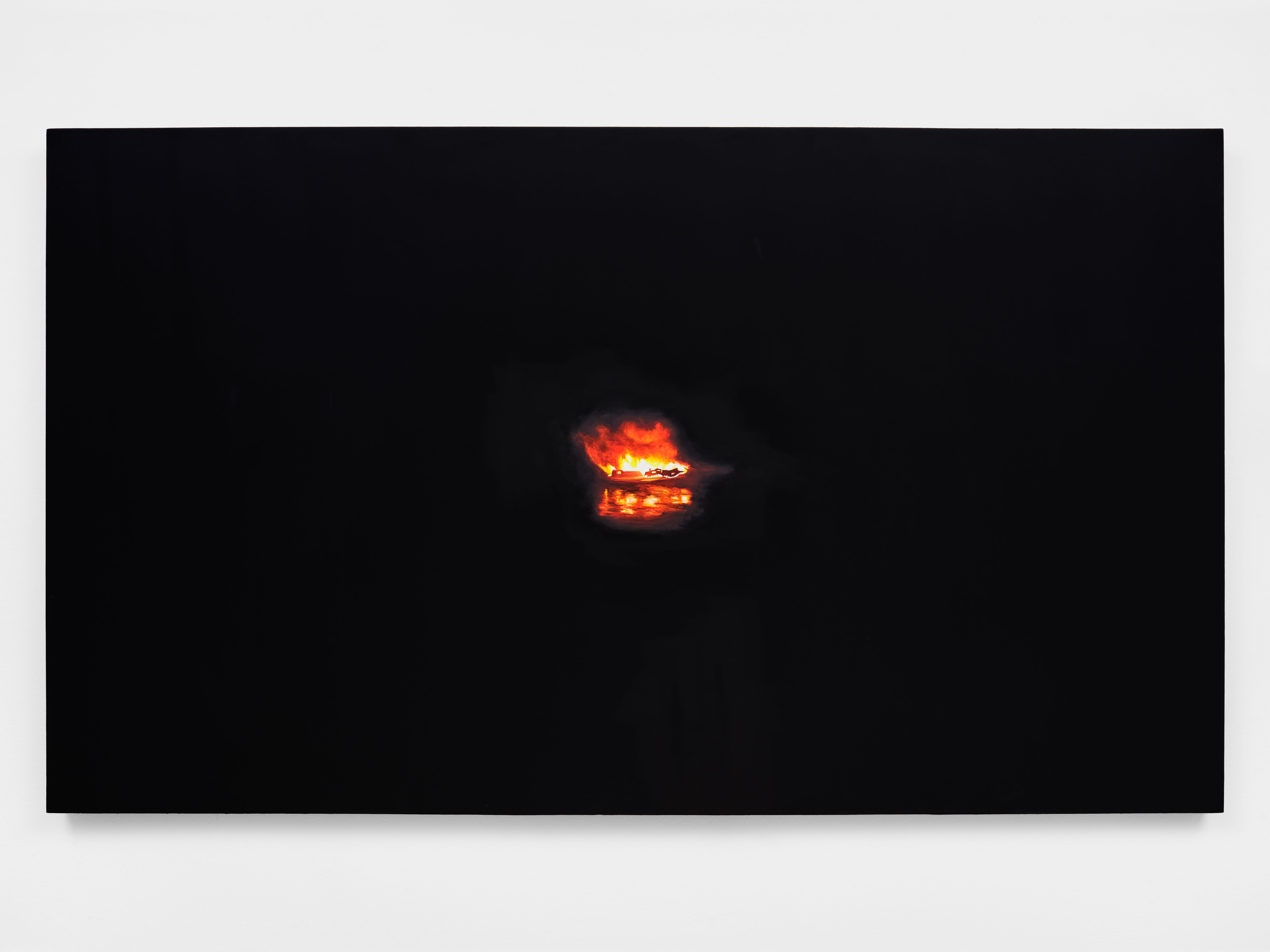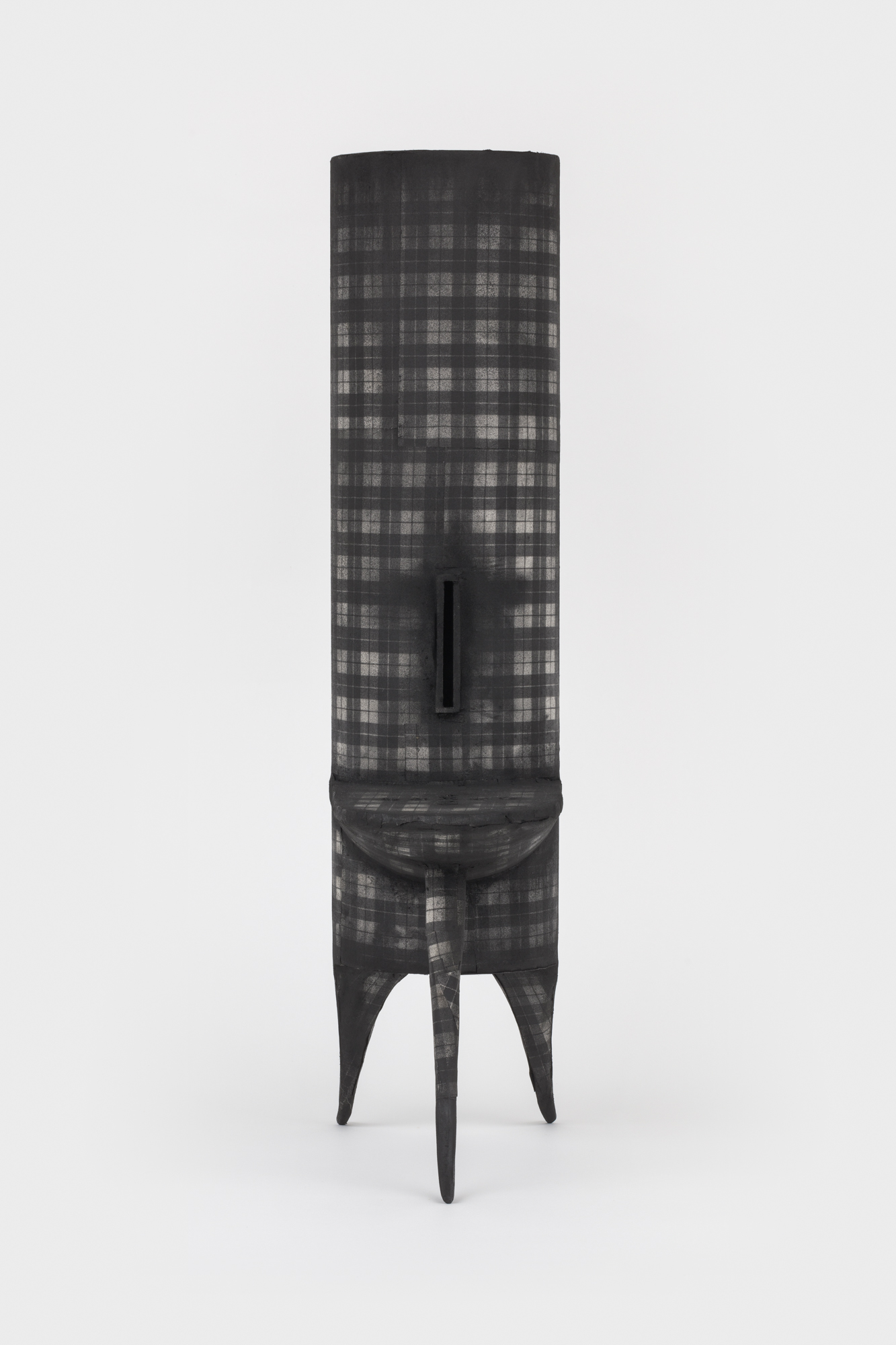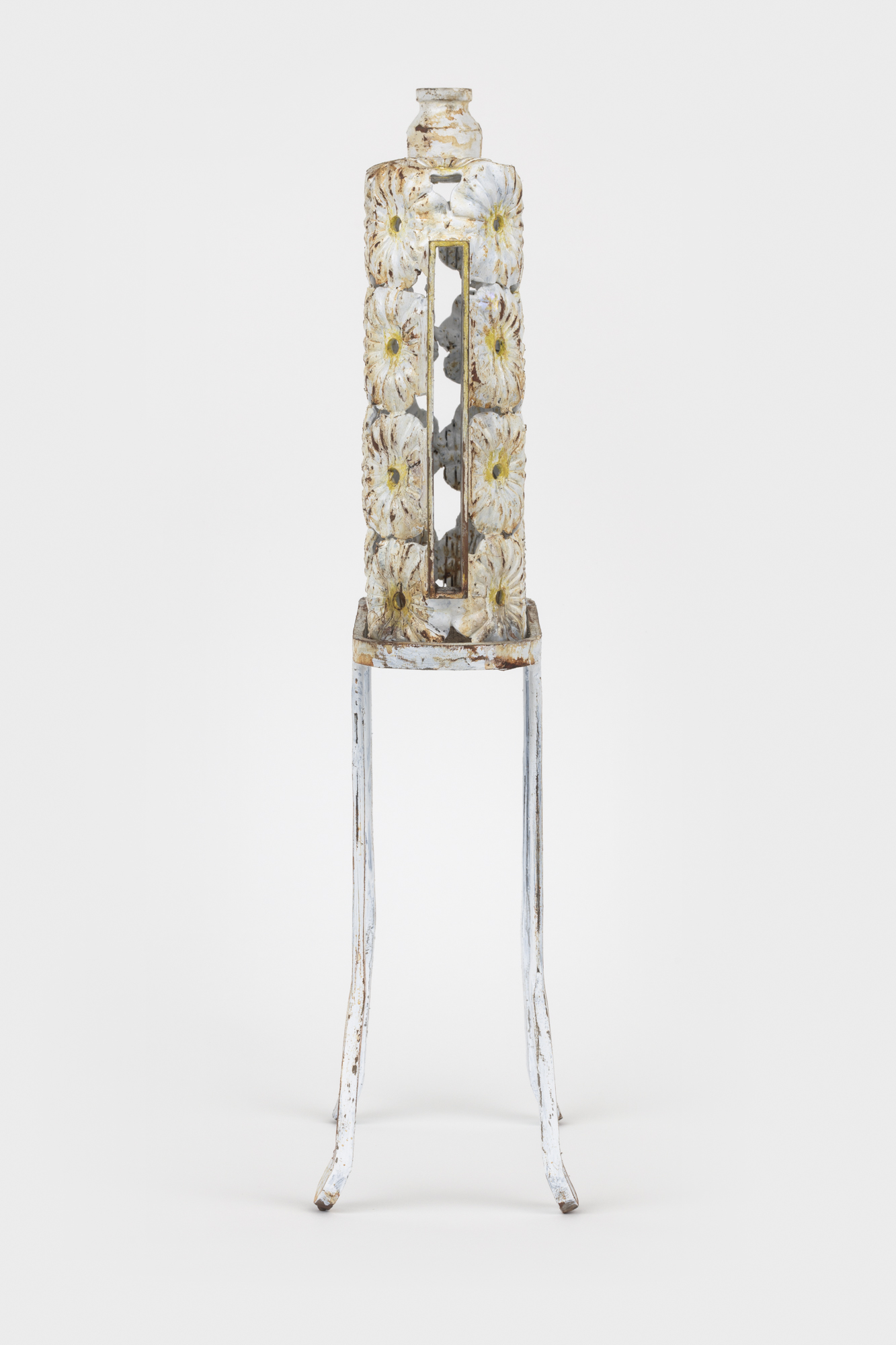Everblue
9.23.2023 – 11.19.2023









Lyndsey Marko, Quiet Flight, oil on canvas, 58” x 100”, 2023.

Nicholas Sullivan, Iron Fan (b&w), steel, charcoal, xerox on newsprint, 15.5” x 6” x 4.5”, 2023.

Iron Fan (color), steel, charcoal, xerox on newsprint, 15.5” x 6” x 4.5”, 2023.
 It’s Always Raining at Seaworld, oil on canvas, 58” x 78”, 2023.
It’s Always Raining at Seaworld, oil on canvas, 58” x 78”, 2023.  Florida at Night, oil on canvas, 58” x 100”, 2023.
Florida at Night, oil on canvas, 58” x 100”, 2023. 
Copper Stove, steel, copper, charcoal, 41” x 10” x 4.5”, 2023.

Plaid Stove Black and White, steel, charcoal, xerox on newsprint, 23” x 13” x 5”, 2023.

Rosette Stove, Steel, Paint, 23” x 14” x 5.5”, 2023.
 My Lottery Sea-Doo, oil on canvas, 68” x 72”, 2023.
My Lottery Sea-Doo, oil on canvas, 68” x 72”, 2023.

Giovanni Battista Piranesi, plate 41 from "Diverse Ways of Ornamenting Chimneypieces”, 1769.
A series of paintings depicting yachts on fire are set against a grouping of stoves and irons that are suspended from the gallery ceiling by their tailpipes. For the exhibition Everblue, artists Lyndsey Marko and Nicholas Sullivan provide subjects that, through fire or the generation of heat, are in varying stages of material transformation.
In the case of Marko, boats consumed by flames are represented in their moment of transmutation. The fire is limited to the vessel that fuels it. Surrounded by a plane of water, the boat and the fire are themselves contained by the sea. “My Lottery Sea-Doo”, a monoscopic painting visible at the gallery’s apex, implicates multiple witnesses to the burning subject. Through the repetition of burning ships, Marko’s paintings do not prioritize the events they represent but rather position the boats on fire as a narrative-category. A synthesis of destruction and fetish—a yacht ablaze celebrates the landscape that consumes it.
With kindred repetition, Sullivan’s stoves and irons are created in a state of disfunction. Connected to the gallery’s ceiling, each form is a propositional surface for collage. The ovens, each with a narrow rectangular cavity, are experienced as charcoaled bodies. Like other lifeforms, the bodies of ovens and irons produce heat. Their four legs and stretched corpus are an anthropomorphic expression of an outmoded technological organism. Sullivan’s irons similarly provide a distributed relationship to the body. A xerox of the artist’s face is mapped across the surface of each of the forms. The artist notes: “The surface of the iron is a charged space where heat is transferred under pressure to affect the surface it presses against. I used my face in the same act to make the image for each corresponding ‘face’ of the iron. The surface of the iron is about creating flatness. I reproduce this by pressing my face against the glass which made a flat image of my face.”
Perceived as a surface, the body of any object is experienced as a plane of consistency; a geometric container that is unbroken by its constituent parts. Objects are limited by their organization. Their presence is a coherence of differential elements. Whether natural or artificial, the bodies of all objects are determined by their outermost layer. An object that is reduced to its topography is liberated from the automatic functions that allow for it to exist in the physical world. The object then exists as a body without organs; a virtual manifestation of a form that transcends its own categorization.
In the works of Marko and Sullivan, fire and heat are reduced to surface qualities. The effects of fire are translated through their mark-making, liberating the subject from its initial identity and function. Fire is characterized by transformation; as a surface it is an ever-changing form; its shape remains in constant motion. To represent fire, especially in a nonmoving form, is to preserve a moment of material transformation; a still life of a changing body.


